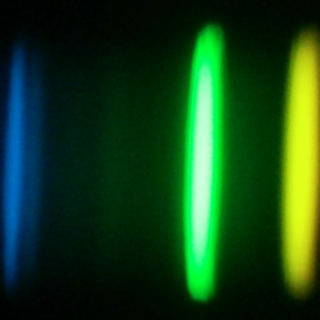Bibcode
Demangeon, O. D. S.; Zapatero Osorio, M. R.; Alibert, Y.; Barros, S. C. C.; Adibekyan, V.; Tabernero, H. M.; Antoniadis-Karnavas, A.; Camacho, J. D.; Suárez Mascareño, A.; Oshagh, M.; Micela, G.; Sousa, S. G.; Lovis, C.; Pepe, F. A.; Rebolo, R.; Cristiani, S.; Santos, N. C.; Allart, R.; Allende Prieto, C.; Bossini, D.; Bouchy, F.; Cabral, A.; Damasso, M.; Di Marcantonio, P.; D'Odorico, V.; Ehrenreich, D.; Faria, J.; Figueira, P.; Génova Santos, R.; Haldemann, J.; Hara, N.; González Hernández, J. I.; Lavie, B.; Lillo-Box, J.; Lo Curto, G.; Martins, C. J. A. P.; Mégevand, D.; Mehner, A.; Molaro, P.; Nunes, N. J.; Pallé, E.; Pasquini, L.; Poretti, E.; Sozzetti, A.; Udry, S.
Bibliographical reference
Astronomy and Astrophysics
Advertised on:
9
2021
Journal
Citations
92
Refereed citations
82
Description
In recent years, the advent of a new generation of radial velocity instruments has allowed us to detect planets with increasingly lower mass and to break the one Earth-mass barrier. Here we report a new milestone in this context by announcing the detection of the lowest-mass planet measured so far using radial velocities: L 98-59 b, a rocky planet with half the mass of Venus. It is part of a system composed of three known transiting terrestrial planets (planets b-d). We announce the discovery of a fourth nontransiting planet with a minimum mass of 3.06−0.37+0.33 M⊕ and an orbital period of 12.796−0.019+0.020 days and report indications for the presence of a fifth nontransiting terrestrial planet. With a minimum mass of 2.46−0.82+0.66 M⊕ and an orbital period 23.15−0.17+0.60 days, this planet, if confirmed, would sit in the middle of the habitable zone of the L 98-59 system. L 98-59 is a bright M dwarf located 10.6ṗc away. Positioned at the border of the continuous viewing zone of the James Webb Space Telescope, this system is destined to become a corner stone for comparative exoplanetology of terrestrial planets. The three transiting planets have transmission spectrum metrics ranging from 49 to 255, which undoubtedly makes them prime targets for an atmospheric characterization with the James Webb Space Telescope, the Hubble Space Telescope, Ariel, or ground-based facilities such as NIRPS or ESPRESSO. With an equilibrium temperature ranging from 416 to 627 K, they offer a unique opportunity to study the diversity of warm terrestrial planets without the unknowns associated with different host stars. L 98-59 b and c have densities of 3.6−1.5+1.4 and 4.57−0.85+0.77 g cm−3, respectively, and have very similar bulk compositions with a small iron core that represents only 12 to 14% of the total mass, and a small amount of water. However, with a density of 2.95−0.51+0.79 g cm−3 and despite a similar core mass fraction, up to 30% of the mass of L 98-59 d might be water.
Full Table B.1 is only available at the CDS via anonymous ftp to cdsarc.u-strasbg.fr (ftp://130.79.128.5) or via http://cdsarc.u-strasbg.fr/viz-bin/cat/J/A+A/653/A41
Based in part on Guaranteed Time Observations collected at the European Southern Observatory under ESO programme(s) 1102.C-0744, 1102.C-0958, and 1104.C-0350 by the ESPRESSO Consortium.
Related projects

Very Low Mass Stars, Brown Dwarfs and Planets
Our goal is to study the processes that lead to the formation of low mass stars, brown dwarfs and planets and to characterize the physical properties of these objects in various evolutionary stages. Low mass stars and brown dwarfs are likely the most numerous type of objects in our Galaxy but due to their low intrinsic luminosity they are not so
Rafael
Rebolo López

Exoplanets and Astrobiology
The search for life in the universe has been driven by recent discoveries of planets around other stars (known as exoplanets), becoming one of the most active fields in modern astrophysics. The growing number of new exoplanets discovered in recent years and the recent advance on the study of their atmospheres are not only providing new valuable
Enric
Pallé Bago

Chemical Abundances in Stars
Stellar spectroscopy allows us to determine the properties and chemical compositions of stars. From this information for stars of different ages in the Milky Way, it is possible to reconstruct the chemical evolution of the Galaxy, as well as the origin of the elements heavier than boron, created mainly in stellar interiors. It is also possible to
Carlos
Allende Prieto